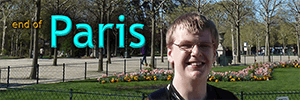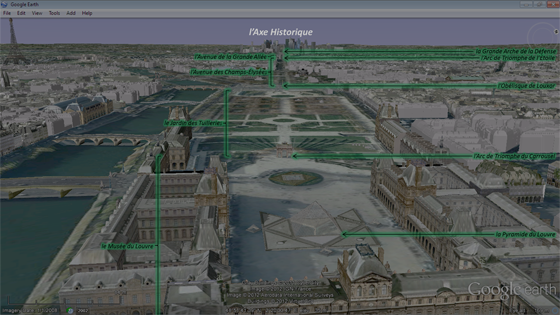“Paris” series of
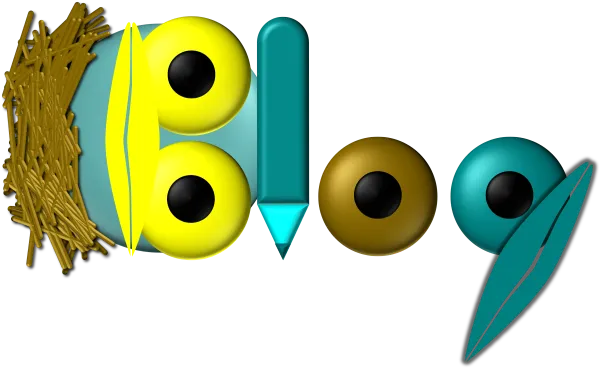 articles
articles
2012
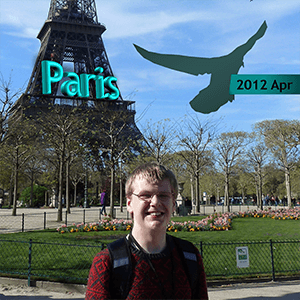
2012 Apr
Mar 31 Sat 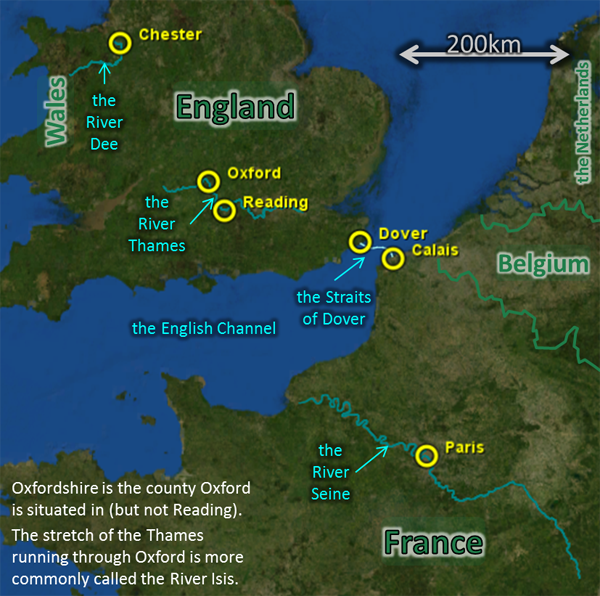
And now I have a school-trip to France.
To get to France by coach, it was prudent take the M40 through Oxfordshire. Not only did we reach Dover more quickly than if we had taken the M5 to Bristol then cut east along the M4 past Reading, we (well, I, really) got the chance to see three big birds, the first two of which may have been red kites; the third bird definitely was. My photo of the final falconiform is blurred, taken - of course - from my window.
Despite not going by plane, we got very close to Heathrow Airport, which is by the M25. Thus, here is a photo of a plane.

And here’s a photo or two of a gull at the Dover ferry terminal complex. Gull. I hate that word so much - it speaks deceit when these are rather elegant birds, unlike the word “gull” that thuds to the floor, sinking to the sea-bed as soon as said.

I liked that gull, and I liked being on the deck of the ferry, in the fresh air. Admittedly it was raining (well, this is/was England), but at least we didn’t see any icebergs.
At least, I didn’t. I was too busy reminiscing about being a look-out in that play about the Titanic.
Reminiscing about being a look-out in that play about the Titanic, I sent this text-message to my parents, who never received it, perhaps fortuitously.

Tout que je peux voir est la mer:
je n’ai pas de binoculaires*.
C’est barbant et
monotone, mais
cet affreux pont est
trop froid pour ronfler,
et tout que je peux voir est la mer.**
*Not a real French word
**Not really true at all.
The French bit translates as “All I can see is the sea: I haven’t any binoculars. It’s boring and monotonous, but this horrid deck is too cold for snoring, and all I can see is the sea.”
The actual French for “binoculars” is “jumelles”, literally meaning “female twins” (“Jumeaux” is Gemini), so the second line of the poem could be “je n’ai pas de paire de jumelles.”
To make it rhyme, the poem could begin “Tout que je peux voir est le Manche: car comme paire de jumelles, je les manque.” (All I can see is the Channel: because I lack a pair of binoculars”.) That’s unnecessarily complicated, though.
It could even be “Tout que je peux voir est une vue bête: je n’ai pas de lunette.”
(“All I can view is a beastly view: I haven’t got a telescope.”) The plural form, “les lunettes”, is the French translation of eye-glasses, as well as spy-glasses. (I wear glasses.)
2012 Apr
Apr 01 Sun 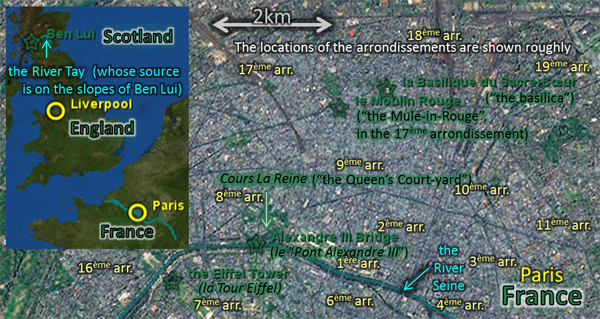

Montmartre received a lot of sunshine this morning, and the hill was photographed a lot this morning, not just by me (okay, that is rather obvious given the touristicness of the area).
Inside the basilica, I was reminded of Liverpool Anglican Cathedral, which I performed in in a biblical play on the 10th, 11th, and 12th of October 2008. (The relevant article is not on Duncan’s Childhood Blog; very few articles that mention my acting credits are online here.) For some reason the interiors of all big churches look similar to me. Dark and mystical, and unphotographable. On the other hand, the pigeons outside were very photographable.


We were allowed an hour to wander around Montmartre, doing whatever civilised tourists do. Some people ate crepes; some people bought the crepes before eating them; some people acquired souvenirs; some people posed for photos; one person photographed pigeons. It was an enjoyable experience. No-one (to my knowledge) was repulsed enough by Montmartre to exclaim “Sacre-Bleu!” by the Sacre-Cœur.
Montmartre’s quite nice in the sunshine. A little cramped, a bit busy, a lot interesting.

 From a well-attended basilica to a well-attended, erm, cabaret-theatre. We didn’t go into the Mule-in-Rouge, as I call it, as it stubbornly won’t go away, is decorated with a lot of red make-up, and its genetic make-up is as strange as a mule’s. As are my jokes.
From a well-attended basilica to a well-attended, erm, cabaret-theatre. We didn’t go into the Mule-in-Rouge, as I call it, as it stubbornly won’t go away, is decorated with a lot of red make-up, and its genetic make-up is as strange as a mule’s. As are my jokes.
We didn’t go into any of the several other buildings offering adult experiences on that street. I mean, the buildings are on one street, not the adult experiences.
We quickly left the seventeenth arrondissement for the seventh. Presently we traversed the Cours La Reine (The Queen’s Court-yard), we passed the Pont Alexandre III, and we arrived at the Eiffel Tower.

Queues don’t get longer than this, except perhaps outside Apple stores at product-launches. On the subject of apples, I enjoyed mine as we waited for a while under the most-visited-per-year tourist attraction in the world. I also enjoyed watching the nearby starlings and sparrows. And the pigeons. Can’t forget the pigeons.


 Finally we were in the Eiffel Tower’s lift, where we were warned of pickpockets in three languages, though the word “pickpockets” is common to all three of them.
Finally we were in the Eiffel Tower’s lift, where we were warned of pickpockets in three languages, though the word “pickpockets” is common to all three of them.
“Attention aux pickpockets - Beware of pickpockets - Vorsicht pickpockets”
The irony is that I was wearing track-suit bottoms that lack pockets.
As the photo on the left is intended to illustrate, the Eiffel Tower has three storeys. The lift took us to the second floor. I then (predictably) took a few photos. Paris is rather beautiful from the air, in the sunshine, under the azure sky.





Sorry. Couldn’t resist.
One day my pigeon-passion will land me in trouble. Just saying. (Though that really is a just saying.)
From the second floor, we walked up the stairs to the top floor. We were instructed to meet back on the ground at 19:30. I took some more photos of Paris, which is rather beautiful from the air, under the cerulean sky...
I saw some pigeons. I photographed some pigeons. The pigeons flew off. I looked for other flighty vertebrates, as the rest of my class had flown off.
Alone, I took the crowded lift back down to the second floor. Then I took the uncrowded stairs back down to the first floor. Then I looked for the stairs back down to the ground. After a few minutes of searching, I noticed the irony in my situation: I had got lost on the most easily found building in France. Then I noticed the similarity between my situation and what I was situated on: both could be described informally as “irony” (or “iron-y”). Then, several minutes later, I noticed the downward staircase. The time was 19:20, so I had ten minutes. I took the lift.
Well, I would have taken the lift, if it had been available.
On the ground under the Tower, I rejoined my class, at 19:32. The teachers were more concerned about the whereabouts of my cousin, Ben Lui, who (as you may remember from the article of 2009 Apr 14) often gets lost. Sometimes people even don’t realise he exists. The 2009 Apr 14 article is not online, and didn’t mention Ben Lui anyway outside of a footnote where I wrote about how I had thought that the source of the river Tay in Scotland was Loch Tay, when it’s the mountain Ben Lui. So that’s the joke in this paragraph: Ben Lui does not exist as a classmate of mine, but as a mountain, and I used to not know that the mountain exists.
But before I get too carried away about Ben Lui, here’s a nice photo I took, while we were waiting:
Apr 02 Mon
After yesterday’s excitement, it was good to have a peaceful day, calmly walking around the serene seventh arrondissement and promenading around the eighth. Which offered me a chance to reflect on the multiple meanings of the word “irony”. First, I would like to cover that word’s adjectival usage. Deriving from the Old English “iren”, “irony” can mean “resembling/containing/concerning iron”; however, this is not the most common usage.
The word “irony” is more commonly used as a noun. As a noun it has four main meanings. Situational irony is the one most commonly referred to as irony, which is defined in my dictionary along the lines of “a situation where something seen as good happens at an inconvenient time”, i.e. a situation that is different to how you might expect it to be. An example in the previous article regards the sign “Beware of pickpockets”, which implied that pickpockets posed a problem to me, but I was wearing pocket-less trousers at the time, so pickpockets didn’t pose a problem to me.
Secondly, dramatic irony is the irony you get when the audience to a play know something that the characters in the play don’t realise. Several examples were in a play I was in recently about the Titanic, where the audience knew that two-thirds of the characters in the play were about to die horrifically, but the characters themselves only realised that this would be the case in the few hours before the ship sank.
Socratic irony means pretending to be ignorant so that the person you’re interviewing reveals their own ignorance. I am not about to cite an instance of this.
But I can cite an instance of verbal irony: “Today was a real disappointment, a real disappointment I say. The weather was the worse it’s been all week, which given how much it rained yesterday, is truly saying something. It’s not as if we’re in the most romantic city ever. We’re stuck in this dingy corner of France, with nothing to do except look at museums with no tourist appeal whatsoever, and staring pointlessly at some pointless Obelisk with stupid pigeons on top. And you know how much I hate pigeons.”
Verbal irony is also known as sarcasm.
To be pedantic, that example of verbal irony is not sarcasm, ironically. Let me explain. Sarcasm is stuff of satirists, sneering and scornful. Sarcasm is a conveyor of contempt, a caustic construction of vitriol and venom, biting, and bitter. Sarcasm is a display of derision, a mordacious marker of mockery, an astringent sign of sardonic cynicism. Sarcasm is the loveliest form of wit. And that’s not sarcasm either.


Apr 03 Tue
Today was a very interesting day, so interesting that I took only two decent photos.


Apr 04 Wed 
I’m going to try to avoid irony in this article.
I’ve better things to think about.
I’d like to swap the ironic for the iconic.
Like the visit to the avenue of the Elysian fields (a.k.a. l’Avenue des Champs-Élysées). The Elysian fields are the Ancient Greeks’ equivalent of Heaven - blessed heroes would spend their afterlife blissfully in the Elysian fields while commoners plodded around Hades. My experience of the Champs-Élysées made me feel like a commoner plodding around Hades. (And I was wanting to avoid irony.)
We were given half an hour of free time to wander around the shops. As we had to stay in groups of four or more, that meant hanging for twenty minutes in an outrageous shop, while one of our party chose a present for his mum, and while the shop-assistant wrapped and packaged and wrapped it.
 Studying the Arc de Triomphe was more favourable. We had to use a subway to access it (as if we weren’t in the Underworld already), because the square it’s in (le Place Charles de Gaulle) is too traffic-laden for pedestrians. It’s a nice arch, the larger of two Arcs de Triomphe built by Napoleon. This arch (l’Arc de Triomphe de l’Étoile) was designed in 1806 to celebrate one of Napoleon’s victories, but is probably better known for housing a Tomb of the Unknown Soldier (le tombe du soldat inconnu) and the first eternal flame in Europe since the 7th century.
Studying the Arc de Triomphe was more favourable. We had to use a subway to access it (as if we weren’t in the Underworld already), because the square it’s in (le Place Charles de Gaulle) is too traffic-laden for pedestrians. It’s a nice arch, the larger of two Arcs de Triomphe built by Napoleon. This arch (l’Arc de Triomphe de l’Étoile) was designed in 1806 to celebrate one of Napoleon’s victories, but is probably better known for housing a Tomb of the Unknown Soldier (le tombe du soldat inconnu) and the first eternal flame in Europe since the 7th century.
 At the other end of the Champs-Élysées is le Place de la Concorde, with l’Obélisque de Louxor. We didn’t stop there; we went round about the roundabout in our coach, and then got out at the Tuilleries Gardens, between the Obelisk and le Musée du Louvre. We didn’t have enough time to have a decent look around the Gardens, in my opinion, though I did enjoy seeing a pigeon on one of the statues.
At the other end of the Champs-Élysées is le Place de la Concorde, with l’Obélisque de Louxor. We didn’t stop there; we went round about the roundabout in our coach, and then got out at the Tuilleries Gardens, between the Obelisk and le Musée du Louvre. We didn’t have enough time to have a decent look around the Gardens, in my opinion, though I did enjoy seeing a pigeon on one of the statues.


 We passed under the second Arc de Triomphe (L’Arc de Triomphe du Carrousel, above), which is smaller than the main arch and has a sculpture of a chariot atop it. The main arch features in the right-hand photo.
We passed under the second Arc de Triomphe (L’Arc de Triomphe du Carrousel, above), which is smaller than the main arch and has a sculpture of a chariot atop it. The main arch features in the right-hand photo.
After the brisk walk, we arrived at the Louvre, where we had time to relax. This was because we were queuing, an activity familiar and thus relaxing to such Brits as us.
I spent my time eating a packed lunch, and musing on the Historical Axis: a line of notable buildings in Paris, with the Louvre at one end and that skyscrapered1 district La Défense at the end. The Champs-Élysées forms part of this Axe Historique, as does the middle path through the Tuilleries Gardens, and both Arcs de Triomphe. The graphic - imagery courtesy of Google Earth - illustrates this:
Once we were in the Louvre proper, we didn’t get much time to admire the paintings.
I wasn’t surprised. It didn’t help that I managed to get stuck in a crowd, and when I had finished twisting my head to discern what the crowd was looking at, my initial thought was “Oh, that again.” (“That” was the Mona Lisa.)
I eventually wriggled out of the crowd, and out of the Louvre. Next on our whistle-stop tour was Notre Dame de Paris, the cathedral serving Paris. For some reason the interiors of all big churches look similar to me. Dark and mystical, and unphotographable. On the other wing, the pigeons outside were very photographable. Predictably.
I indulged in a bit of déjà flew.
And then we flew.
Footnote
1. If a guy called Skye sold pancakes there, I’d say La Défense was Skye’s-Crêpe-ered.
Apr 05 Thu 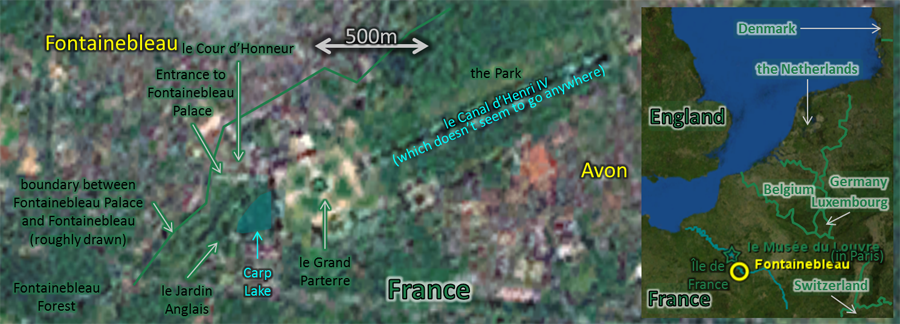
Fontainebleau - the fountain of beautiful water (la fontaine de belle eau). In fact it’s a commune (village) south-east of Paris, the only commune in the Île-de-France region with a surface area greater than Paris’. Most famous as a country-retreat for French nobility of yore, Fontainebleau’s two greatest attractions are the Forest of Fontainebleau and le Château de Fontainebleu.
The word “château” in French can either refer to a castle or a grand place of residence for aristocrats (i.e. a palace). The word “palais” also means a grand place of residence for aristocrats; the distinction between the two is that les palais are in the city. (Though the word “palais” is also the French word for the roof of the mouth, the uraniscus, the palate.)
| Rural | Urban | |
|---|---|---|
| Castle | un château | un château 1 |
| Palace | un château | un palais |
| Palate | un palais | un palais |
 Anyway, that’s relevant because we visited Fontainebleau Palace today, after quite a long coach-journey. The interiors were similar to exhibits at the Louvre. (One part of the Louvre had rooms resembling Renaissance bed-rooms.) These rooms were rather splendid and resplendent. But what really excited me was the exteriors: the gardens were a spacious antidote to the claustrophobia of the city. Indeed, one of the gardens, le Grand Parterre (the Big Flower-bed), is the largest formal garden in Europe.
Anyway, that’s relevant because we visited Fontainebleau Palace today, after quite a long coach-journey. The interiors were similar to exhibits at the Louvre. (One part of the Louvre had rooms resembling Renaissance bed-rooms.) These rooms were rather splendid and resplendent. But what really excited me was the exteriors: the gardens were a spacious antidote to the claustrophobia of the city. Indeed, one of the gardens, le Grand Parterre (the Big Flower-bed), is the largest formal garden in Europe.
 Before reaching the Big Flower-bed, we (I and three others) walked around le Cour de la Fontaine. At the heart of this garden was Carp Lake, so called because of its ichthyic inhabitants, its piscine population, its fishy residents.
Before reaching the Big Flower-bed, we (I and three others) walked around le Cour de la Fontaine. At the heart of this garden was Carp Lake, so called because of its ichthyic inhabitants, its piscine population, its fishy residents.
I was more interested in the ducks. And the coots. And the swan. And they swam.
 On the opposite side of Carp Lake from the palace buildings was an entrance to le Jardin Anglais, which was my cue to whistle “English Country Garden”, much to the others’, erm, delight. A robin started to sing soon afterwards.
On the opposite side of Carp Lake from the palace buildings was an entrance to le Jardin Anglais, which was my cue to whistle “English Country Garden”, much to the others’, erm, delight. A robin started to sing soon afterwards.

Returning alongside Carp Lake, we entered le Grand Parterre. It was a big flower-bed. (If grass and another lake count as flowers.) A magpie promenaded on a path. A pied wagtail wagged its tail. Chaffinches chirped, in a French country garden.
On the other side of le Grand Parterre was a view out to a canal that endured to the horizon. We returned to the coach.
Thus, we returned to our accommodation, where I had a happy few hours playing Scrabble against a class-mate called S, who is better at Scrabble than I am at chess (and she is better at chess than I am at Scrabble). We stopped playing after midnight.
Footnote
1 Not quite sure why a castle would be inside a city, given that the castle is supposed to protect the city. It would be like putting a bullet-proof vest inside you (which would be hard to stomach).
Apr 06 Fri 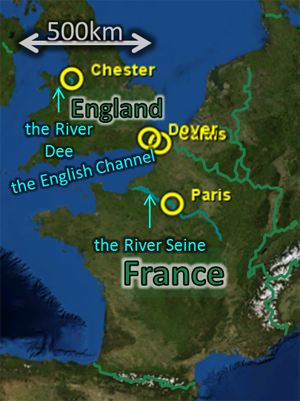
Goodbye France; bonjour l’Angleterre!

